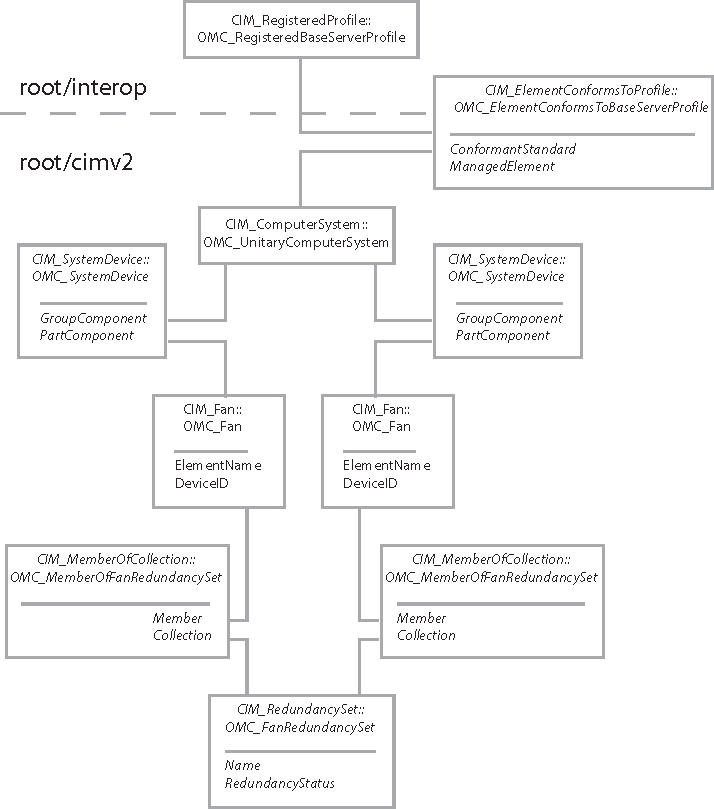Fan redundancy information is useful to system administrators who need to monitor system health. This example shows how to locate system fans and query the CIMOM for redundant fan relationships.
This example shows how to enumerate the fans by starting from the Interop namespace and traversing associations from the managed server Scoping Instance. Locating Redundant Fans shows the relationships of the CIM objects involved. If the managed server provides redundant cooling, the redundancy is modeled in the CIMOM by an instance of CIM_RedundancySet that is associated with two (or more) redundant fans.
This pseudocode depends on the pseudocode in Make a Connection to the CIMOM and Identifying the Base Server Scoping Instance.
